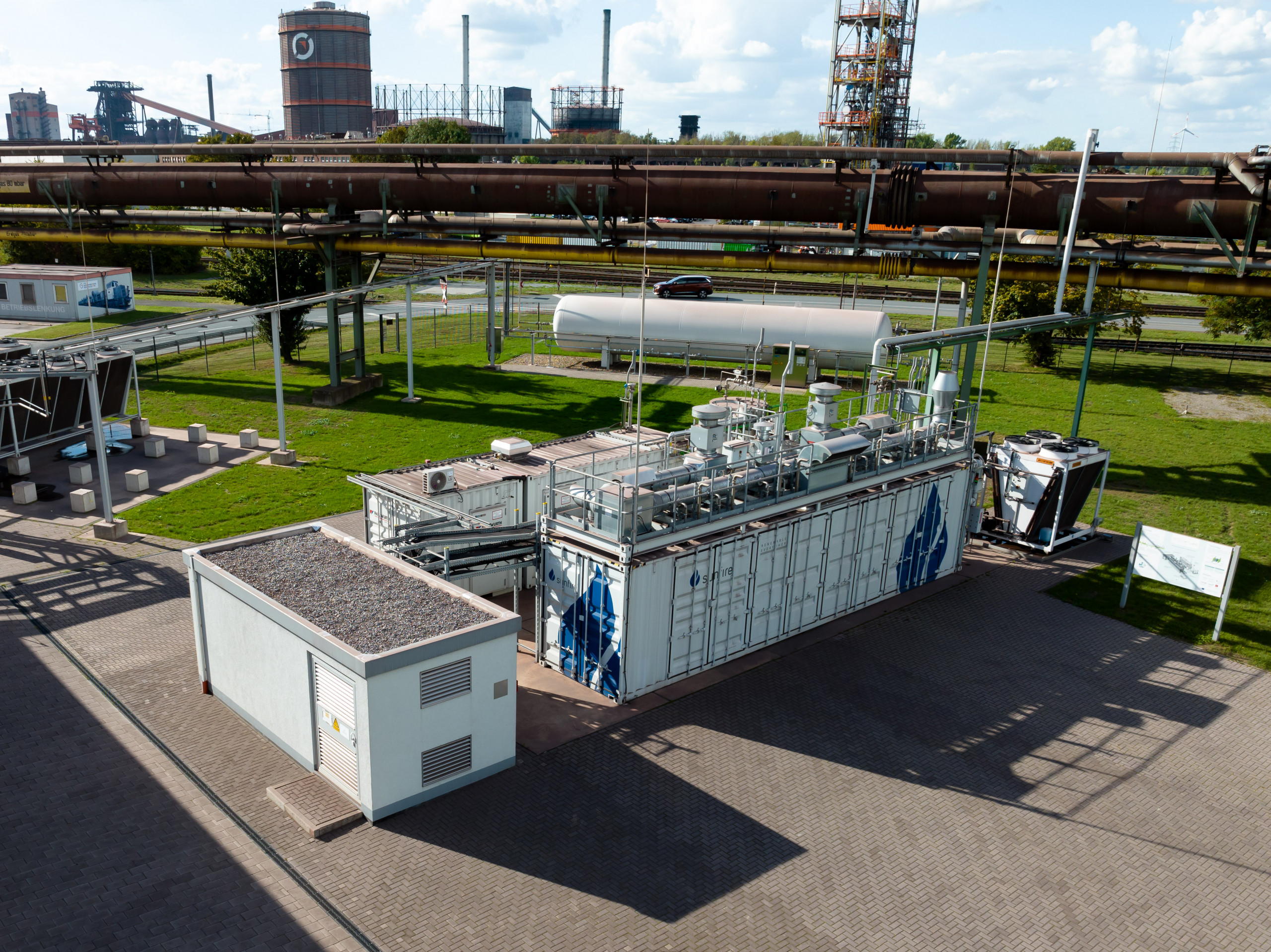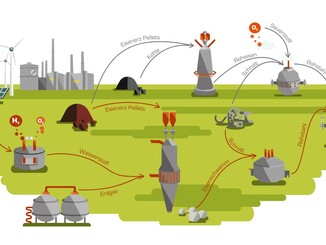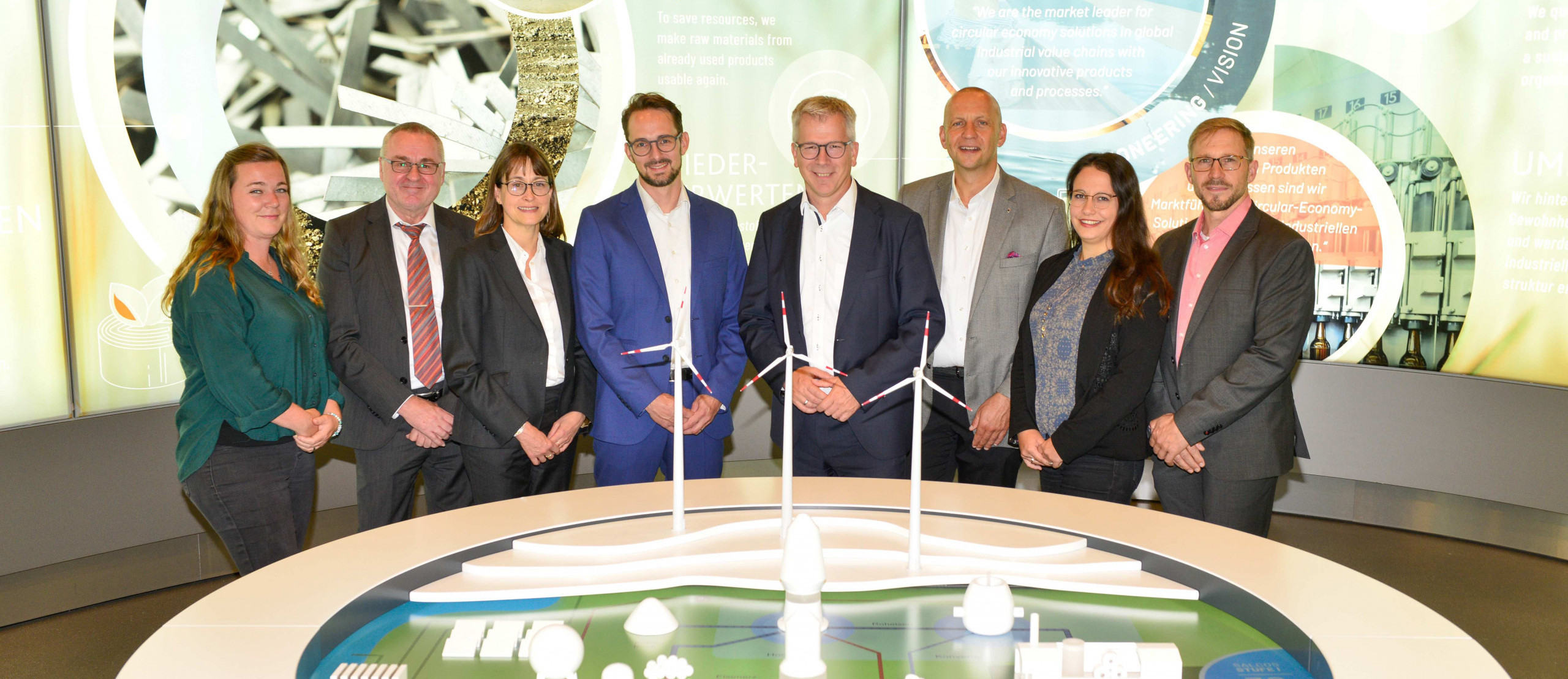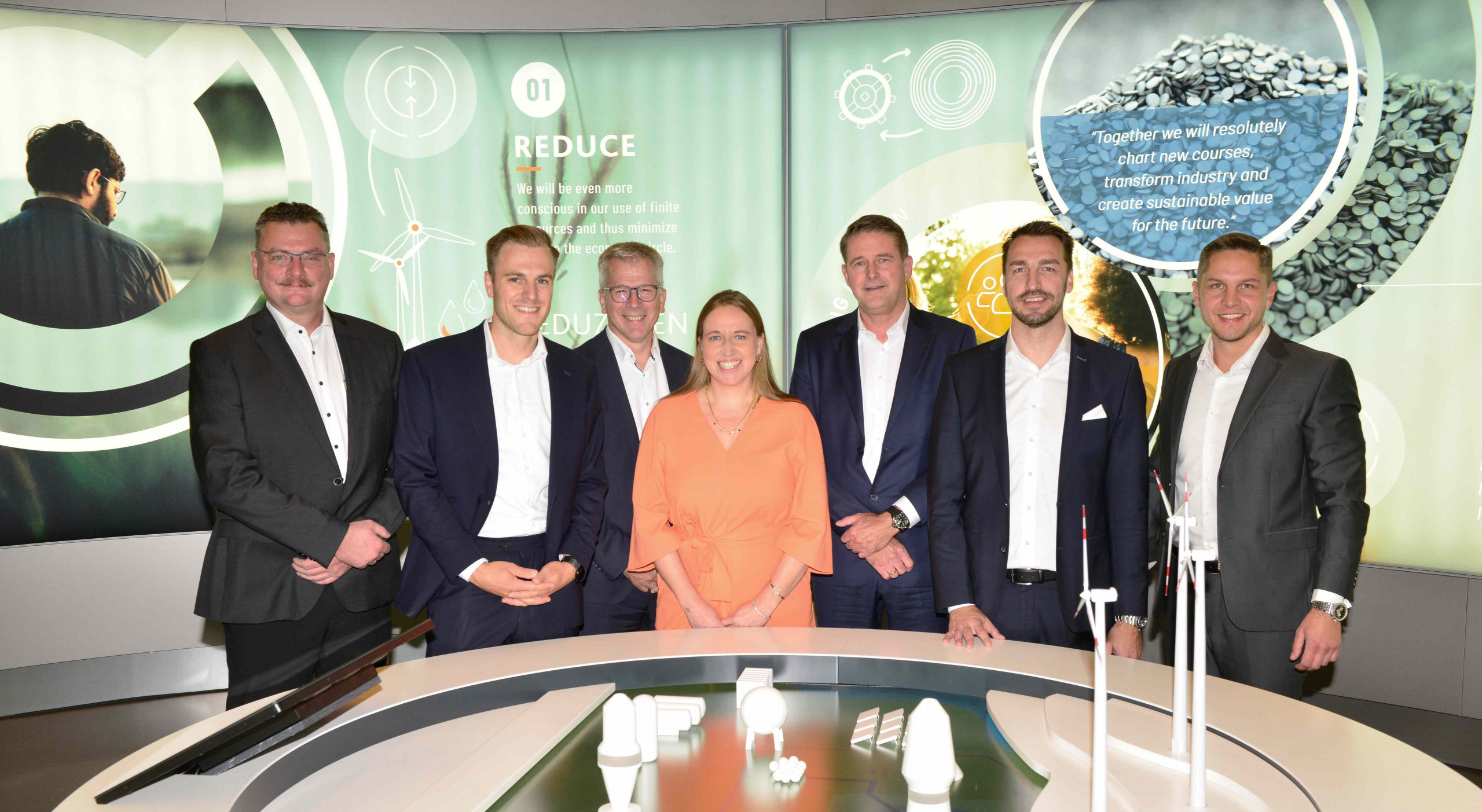
The steel industry is on the verge of decarbonization, so it is no wonder that three Salzgitter AG announcements at the turn of the year have to do with the Salcos – Salzgitter Low CO2 Steelmaking – project.
SOEC electrolysis project makes progress
Sunfire and Salzgitter AG are driving forward the industrial use of SOEC electrolysis to produce “green” hydrogen. Together with the TU Bergakademie Freiberg, they are validating the latest stacks in the GrInHy3.0 research project.
Green hydrogen plays a central role in the decarbonization of the steel industry. This can be produced particularly efficiently and therefore cost-effectively in high-temperature SOEC electrolyzers. Sunfire, Salzgitter AG and the TU Bergakademie Freiberg are now jointly taking an important step towards the industrial use of this technology.
In the GrInHy3.0 research project, the partners are integrating the latest SOEC stack technology from Sunfire into the hydrogen network of Salzgitter Flachstahl GmbH’s steelworks. The plant will produce 16.5 kg of hydrogen per hour, which will be used, among other things, for the direct reduction of iron ore in the µDral pilot plant.
The companies are thus building on their successful collaboration in the GrInHy (“Green Industrial Hydrogen”) project series. In the previous project, Sunfire’s SOEC electrolyzer achieved a record efficiency of 84 %el,LHV. After more than 19,000 operating hours and 190 tons of hydrogen produced, the existing eight modules are now being replaced. Two new test modules with 540 kW electrolysis output, which will generate important findings for the upcoming series production, will be integrated into the existing infrastructure for this purpose. Commissioning is planned for 2024.
For Salzgitter AG, the project is an important building block on the way to green steel production, which the Group is pursuing in its Salcos – Salzgitter Low CO2 Steelmaking – program, among other things.
The TU Bergakademie Freiberg completes the project consortium. Researchers at the Institute of Nonferrous Metallurgy and High-Purity Materials are looking at various aspects of sustainability and examining options for recycling and reusing components, among other things. They are also investigating the life cycle of the SOEC stacks. As the SOEC electrolyzers split water vapor into oxygen and hydrogen at a temperature of 850 °C, the material is subjected to high stress. Sunfire has therefore further developed its stacks, particularly with regard to their robustness. Industrial users benefit from the extended service life of the systems.
The GrInHy3.0 research project will run until 2027 and is funded by the Federal Ministry for Economic Affairs and Climate Protection.
CO2-reduced flat steel for the automotive industry
The automotive supplier Gedia Automotive Group and Salzgitter Flachstahl GmbH recently signed a Memorandum of Understanding (MoU). In order to make the production of pressed body parts and welded assemblies more sustainable in the future, Gedia will use CO2-reduced steel from the Salcos route in the manufacture of its products.
With the Salcos transformation program, the Salzgitter Group is gradually converting its steel production to hydrogen-based processes. The goal is to achieve virtually CO2-free production from 2033. To this end, the traditional blast furnace route is being replaced by production processes using direct reduction and electric arc furnaces. Salzgitter Flachstahl can already supply its customers with CO2-reduced steel via the so-called Peiner Route. The raw steel is produced from scrap in an electric arc furnace and cast into slabs.
Gedia is a long-standing partner of Salzgitter Flachstahl (SZFG). SZFG supplies the company, which has nine locations worldwide, primarily with cold-rolled sheet and hot-dip galvanized steels for lightweight automotive body construction and chassis components.
Blast furnace A blown again after lining
“Blast furnace” doesn’t exactly sound like decarbonization, but as we all know, better is the enemy of worse: In Salzgitter, blast furnace A has been fired up again after a complete modernization lasting just over 100 days. With the relining, the Salzgitter Group has taken an important operational step towards securing its pig iron base in the transformation phase towards low-CO2 steel production by 2033.
During the construction phase, blast furnace A was completely overhauled – relined, as they say in the steel industry. Among other things, the refractory lining was renewed with 3,000 tons of carbon bricks and other refractory materials. The complex process and control technology was also modernized. Just over EUR 100 million was invested in the new delivery. Pirson Montage AG was a key partner.
Ulrich Grethe, CEO of Salzgitter Flachstahl GmbH, explained: “This relining gives us and our customers and partners the necessary security to continue to consistently drive forward the transformation of steel production. Starting from a solid pig iron base, we will take the next steps for Salcos.”
Gerd Baresch, Managing Director of Technology at Salzgitter Flachstahl GmbH, commented: “We would like to thank all of our company’s employees and our partner companies for their commitment. Such an extremely complex project can only succeed with the cooperative interaction of many committed specialists. We have thus made Blast Furnace A fit for its final production cycle.”
Blast furnace A went into operation in 1977 and has been relined several times. It has an annual capacity of around 2 million tons of pig iron.



